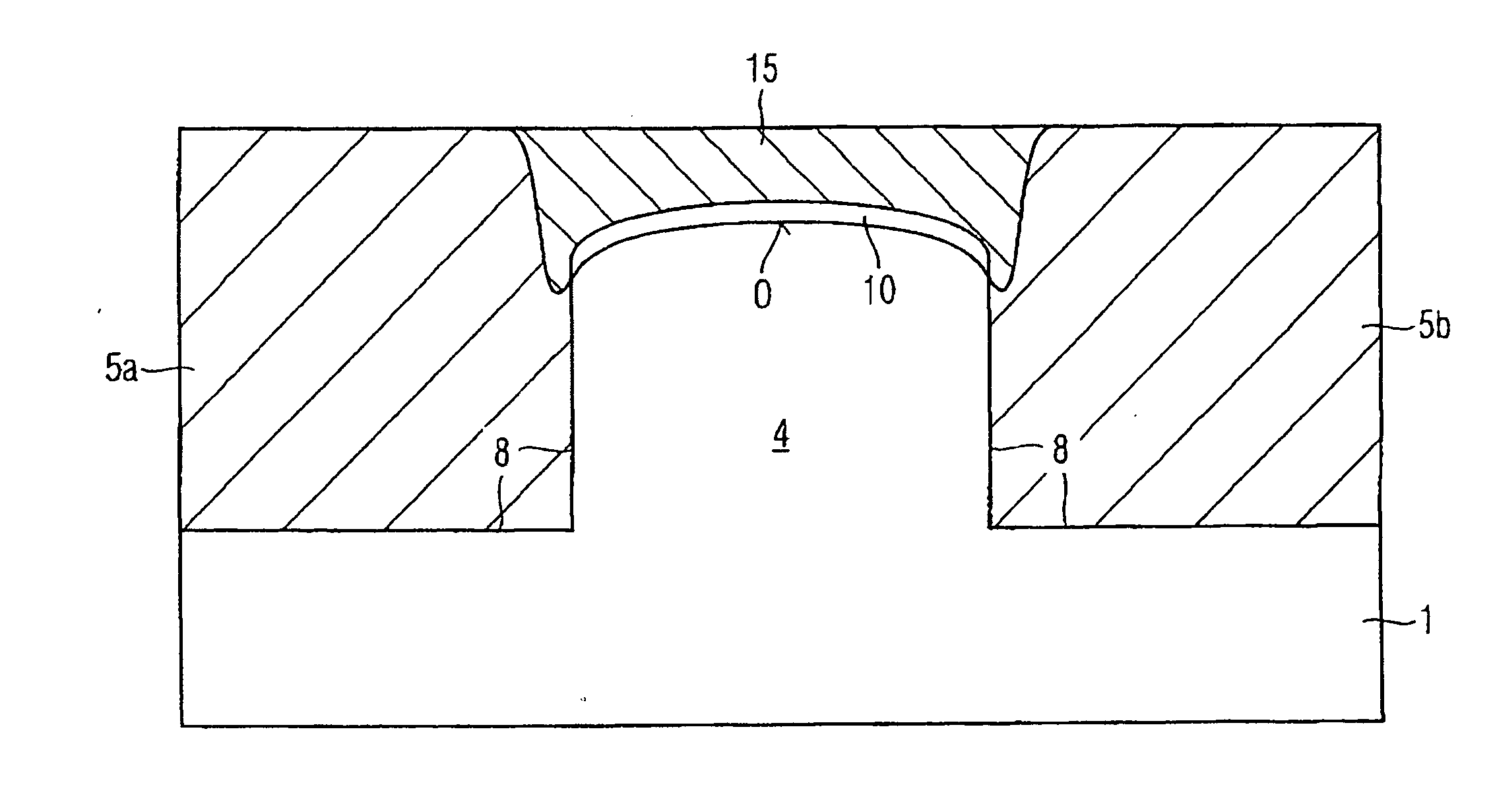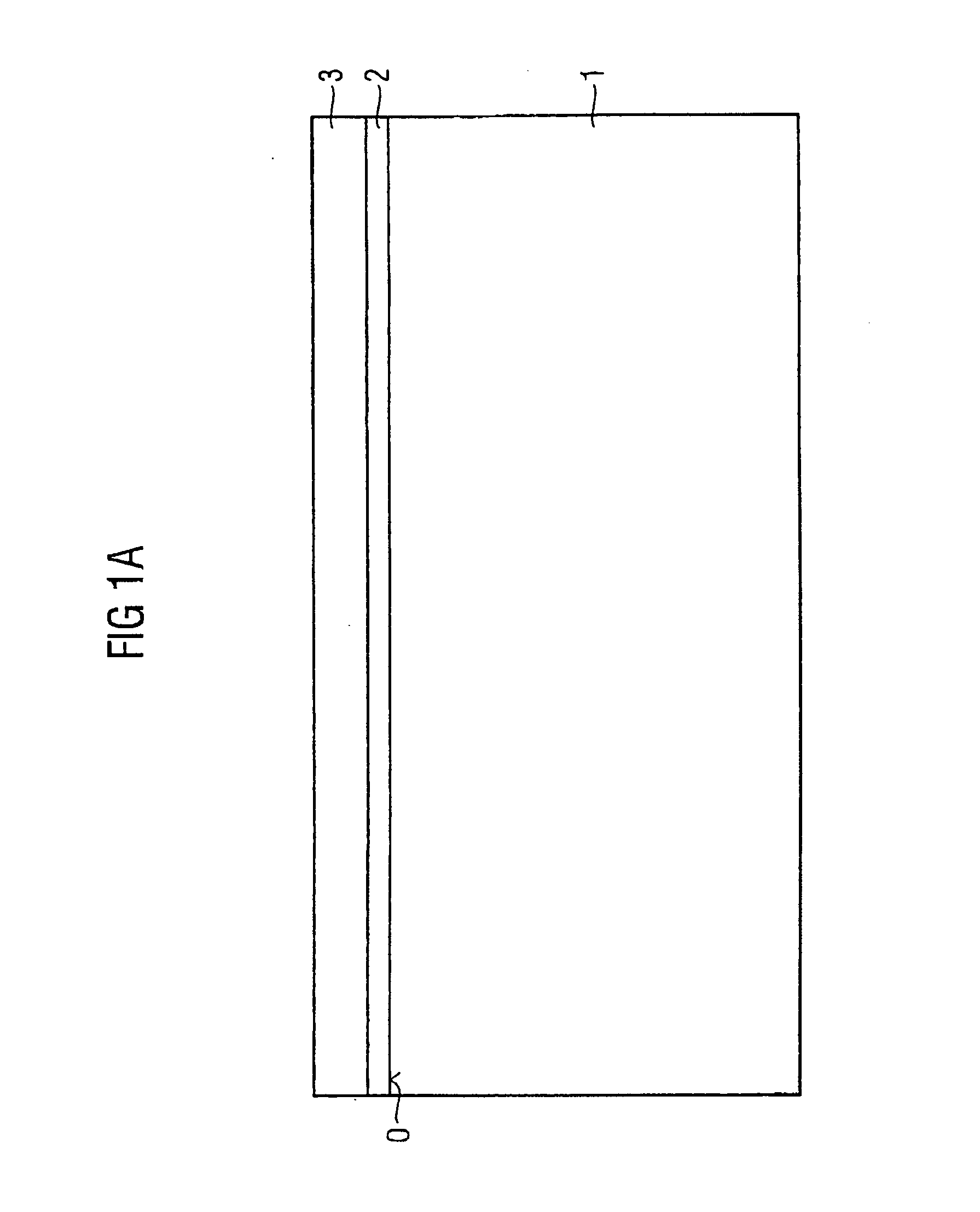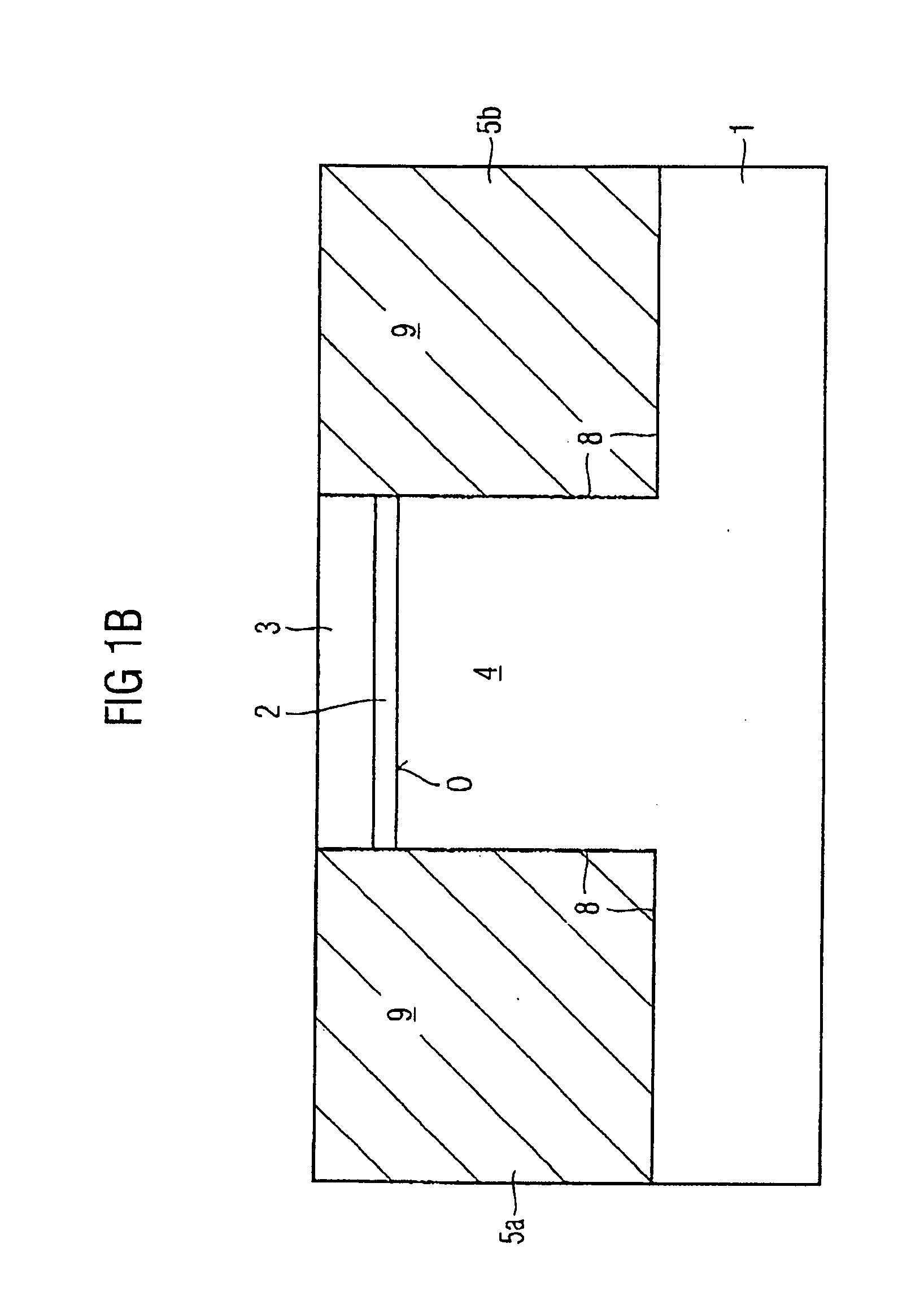Fabrication method for fabricating a semiconductor structure and semiconductor structure
a technology of semiconductor structure and fabrication method, which is applied in the direction of semiconductor devices, basic electric elements, electrical apparatus, etc., can solve the problems of leakage current problems below the threshold voltage, retention time problems, and affect the controllability of setting, so as to maximize the maximum current, improve the process control of the divots, and improve the effect of the maximum electric field strength variation
- Summary
- Abstract
- Description
- Claims
- Application Information
AI Technical Summary
Benefits of technology
Problems solved by technology
Method used
Image
Examples
first embodiment
[0020] FIGS. 1A-E show schematic illustrations of successive method stages of a fabrication method of a semiconductor structure as the present invention.
[0021] In FIG. 1A, reference symbol 1 designates a silicon semiconductor substrate, to the top side O of which are applied a pad oxide layer 2 and, above the latter, a pad nitride layer 3.
[0022] Referring further to FIG. 1B, by means of a method known per se, mask openings (not illustrated) are formed in the pad oxide layer 2 and pad nitride layer 3 and STI trenches 5a, 5b are subsequently etched into the semiconductor substrate 1 with the aid of said mask openings. The walls of the STI trenches 5a, 5b are then provided with a thermal oxide layer 8, and, finally, the STI trenches 5a, 5b are filled with an insulating silicon oxide filling 9 and planarized as far as the top side of the pad nitride layer 3 by means of a CMP process (chemical mechanical polishing). This leads to the structure shown in FIG. 1b, reference symbol 4 repres...
second embodiment
[0030] The second embodiment in accordance with FIGS. 2A to C involves an RCAT transistor device (RCAT=Recessed Channel Array Transistor), in which a U-shaped channel runs through a silicon semiconductor substrate 1′ along a trench 20 with a gate dielectric 10′ and a gate conductor 15′, as shown in FIG. 2A. The reference symbols 7 and 8 designate a source and drain zone, respectively.
[0031]FIG. 2A represents a longitudinal section through an RCAT transistor device of this type, whereas FIGS. 2B and 2C illustrate a cross section along the sectional line X in FIG. 2A.
[0032] As can be gathered from FIG. 2B, the active region 4′ is bounded on both sides by a respective STI trench 5a′, 5b′ in the transverse direction. During the fabrication of the trench 20, divots D1′, D2′ form at the edges K′ of the active region 4′.
[0033] Following the process state shown in FIG. 2B, the H termination of the top side O′ in a vaporous or liquid HF solution as already described in connection with the ...
PUM
 Login to View More
Login to View More Abstract
Description
Claims
Application Information
 Login to View More
Login to View More - R&D
- Intellectual Property
- Life Sciences
- Materials
- Tech Scout
- Unparalleled Data Quality
- Higher Quality Content
- 60% Fewer Hallucinations
Browse by: Latest US Patents, China's latest patents, Technical Efficacy Thesaurus, Application Domain, Technology Topic, Popular Technical Reports.
© 2025 PatSnap. All rights reserved.Legal|Privacy policy|Modern Slavery Act Transparency Statement|Sitemap|About US| Contact US: help@patsnap.com



